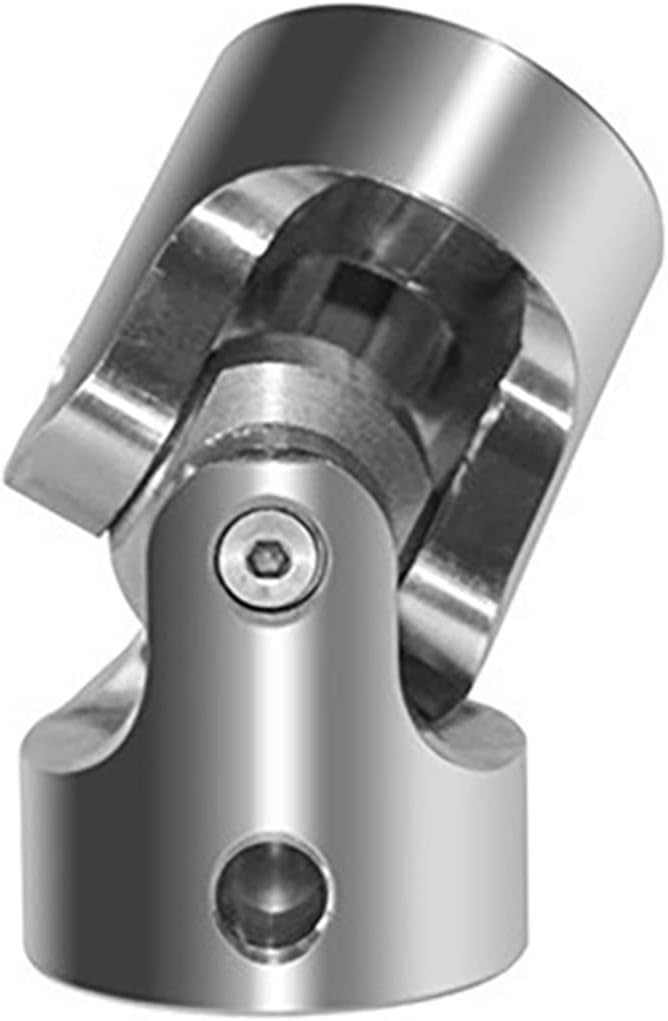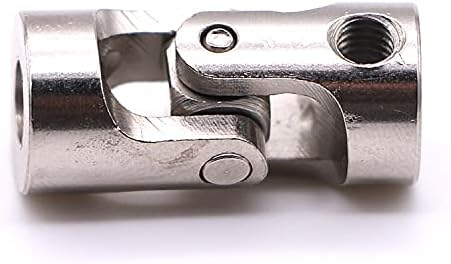Product Description
Large SWC type Cross Shaft Universal Coupling
Description
SWC-BH types Cardan shaft is a kind of the most commonly used with the characteristics of its structure can not in the same axis or axis angle or larger axial movement of 2 large equiangular continuous rotary speed, and reliably transfer torque and motion.
It can be widely used in paper machinery, metallurgy, lifting, transportation, mining, petroleum, shipbuilding, coal, rubber, and other heavy machinery industry machinery shaft in the transmission torque.
Product Parameters
| Model | Lmin | kg. m2 | |||||||||||||||||
| D/mm | Tn | T. | β/ | LS | Size | kg | |||||||||||||
| KN • m | KN • m | (.) | mm | mm | |||||||||||||||
| Di | d2 | Da | Lm | n x φ d | k | t | b | g | Lmin | 100mm | Lmin | 100mm | |||||||
| js11 | H7 | h9 | |||||||||||||||||
| SWC100BH | 100 | 2.5 | 1.25 | ≤25 | 55 | 405 | 84 | 57 | 60 | 55 | 6 x φ 9 | 7 | 2.5 | – | – | 0.0044 | 0.00019 | 6.1 | 0.35 |
| SWC120BH | 120 | 5 | 2.5 | ≤25 | 80 | 485 | 102 | 75 | 70 | 65 | 8 x φ 11 | 8 | 2.5 | – | – | 0.5719 | 0.00044 | 10.8 | 0.55 |
| SWC150BH | 150 | 10 | 5 | ≤25 | 80 | 590 | 13 | 90 | 89 | 80 | 8 x φ 13 | 10 | 3 | – | – | 0.0423 | 0.00157 | 24.5 | 0.85 |
| SWC180BH | 180 | 22.4 | 11.2 | ≤15 | 100 | 840 | 155 | 105 | 114 | 110 | 8 x φ 17 | 17 | 5 | 24 | 7 | 0.175 | 0.007 | 70 | 2.8 |
| SWC200BH | 200 | 36 | 18 | ≤15 | 110 | 860 | 170 | 120 | 127 | 115 | 8 x φ 17 | 19 | 5 | 28 | 8 | 0.31 | 0.013 | 86 | 3.6 |
| SWC225BH | 225 | 56 | 28 | ≤15 | 140 | 920 | 196 | 135 | 152 | 120 | 8 x φ 17 | 20 | 5 | 32 | 9 | 0.538 | 0.5714 | 122 | 4.9 |
| SWC250BH | 250 | 80 | 40 | ≤15 | 140 | 1035 | 218 | 150 | 168 | 140 | 8 x φ 19 | 25 | 6 | 40 | 12.5 | 0.966 | 0.5717 | 172 | 5.3 |
| SWC285BH | 285 | 120 | 58 | ≤15 | 140 | 1190 | 245 | 170 | 194 | 160 | 8 x φ 21 | 27 | 7 | 40 | 15 | 2.011 | 0.051 | 263 | 6.3 |
| SWC315BH | 315 | 160 | 80 | ≤15 | 140 | 1315 | 280 | 185 | 219 | 180 | 10 x φ 23 | 32 | 8 | 40 | 15 | 3.605 | 0.571 | 382 | 8 |
| SWC350BH | 350 | 225 | 110 | ≤15 | 150 | 1440 | 310 | 210 | 267 | 194 | 10 x φ 23 | 35 | 8 | 50 | 16 | 7.053 | 0.2219 | 582 | 15 |
| SWC390BH | 390 | 320 | 160 | ≤15 | 170 | 1590 | 345 | 235 | 267 | 215 | 10 x φ 25 | 40 | 8 | 70 | 18 | 12.164 | 0.2219 | 738 | 15 |
| SWC440BH | 440 | 500 | 250 | ≤15 | 190 | 1875 | 390 | 255 | 325 | 260 | 16 x φ 28 | 42 | 10 | 80 | 20 | 21.42 | 0.4744 | 1190 | 21.7 |
| SWC490BH | 490 | 700 | 350 | ≤15 | 190 | 1985 | 435 | 275 | 325 | 270 | 16 x φ 31 | 47 | 12 | 90 | 22.5 | 32.86 | 0.4744 | 1452 | 21.7 |
| SWC550BH | 550 | 1000 | 500 | ≤15 | 240 | 2300 | 492 | 320 | 426 | 305 | 16 x φ 31 | 50 | 12 | 100 | 22.5 | 68.92 | 1.357 | 2380 | 34 |
Packaging & Shipping
FAQ
1: Are you a trading company or a manufacturer ?
We are a professional manufacturer of couplings and universal joints.
2:Why choose Ding Jian precision transmission ?
As a professional manufacturer of coupling and universal joints, we possess a skillful team of workers and designers To provide our customers with first-class services.
3: Can You Strictly Follow The Tolerance on The Drawing And Meet The High Precision?
Yes, we can, we can provide high precision parts and make the parts as your drawing.
4:How long does it take to delivery?
Generally, it is 20-30 days if the goods are not in stock. It is according to quantity.
5:How to deal with the parts received when they are found to be in poor quality?
In case of non- conformance, please contact us immediately, we will check the problems and have them reworked or repaired at the first time. If none of these works, we support a refund.
/* January 22, 2571 19:08:37 */!function(){function s(e,r){var a,o={};try{e&&e.split(“,”).forEach(function(e,t){e&&(a=e.match(/(.*?):(.*)$/))&&1

Maintenance Practices for Ensuring Cardan Coupling Reliability
To ensure the reliability of cardan couplings, the following maintenance practices are crucial:
- Lubrication: Regularly inspect and maintain the lubrication system. Ensure proper lubricant levels and use lubricants recommended by the manufacturer.
- Alignment: Maintain proper alignment between the input and output shafts. Misalignment can lead to premature wear and reduced efficiency.
- Regular Inspections: Perform visual inspections to detect signs of wear, damage, or corrosion. Regular inspections can help identify issues before they become major problems.
- Monitoring: Use sensors and monitoring systems to track the performance of the cardan coupling. Monitor temperature, vibration, and other parameters for anomalies.
- Torque Analysis: Analyze the torque requirements of the machinery system to ensure that the cardan coupling can handle the load without exceeding its limits.
- Periodic Maintenance: Follow the manufacturer’s recommended maintenance schedule. This may include replacing worn components, lubricant changes, and alignment adjustments.
- Record Keeping: Maintain detailed maintenance records, including inspection dates, lubrication schedules, and any repairs performed.
- Training: Ensure that maintenance personnel are trained to properly inspect, maintain, and troubleshoot cardan couplings.
By implementing these maintenance practices, operators can extend the lifespan of cardan couplings, prevent unexpected failures, and optimize the performance of machinery systems.

Handling High Torque and Axial Displacement with Cardan Couplings
Cardan couplings, also known as universal joints or u-joints, are designed to transmit torque between two shafts that are not in a straight line. They are versatile components commonly used in various applications, including those requiring high torque and axial displacement.
Handling High Torque: Cardan couplings are capable of handling high levels of torque transmission due to their robust design and construction. The design allows for torque to be transmitted through a series of interconnected components, including the cross-shaped yokes and the bearing assemblies. The use of high-strength materials and precision manufacturing techniques contributes to the coupling’s ability to transmit torque efficiently.
Handling Axial Displacement: While cardan couplings are primarily designed for accommodating angular misalignment, they can also handle a certain degree of axial displacement. Axial displacement refers to the movement of the connected shafts along their axis. However, the axial displacement capacity of a cardan coupling is limited compared to its ability to handle angular misalignment.
It’s important to note that excessive torque or axial displacement beyond the coupling’s design limits can lead to premature wear, increased vibrations, and reduced performance. Manufacturers provide specifications and guidelines for the maximum torque and axial displacement that a specific cardan coupling can handle. Engineers and designers should adhere to these specifications to ensure optimal performance and longevity of the coupling in their applications.

Accommodation of Angular Misalignment in Shaft with Cardan Coupling
A cardan coupling, also known as a universal joint or u-joint, is designed to accommodate angular misalignment between two shafts while maintaining a constant velocity transfer. Here’s how it works:
The cardan coupling consists of two yokes or fork-like components, each attached to the end of a shaft. These yokes are connected by a cross-shaped central component called the cross or spider. The spider has bearings at its four ends that fit into grooves in the yokes.
When the connected shafts are misaligned at an angle, the spider allows the yokes to pivot around their respective shafts. This pivoting action of the yokes and the spider enables the coupling to transmit torque between the shafts even when they are not perfectly aligned. The spider’s bearings allow smooth rotation and transfer of power.
The design of the cardan coupling ensures that even during angular misalignment, the rotational speed remains consistent between the input and output shafts. However, it’s important to note that while cardan couplings can accommodate angular misalignment, they introduce a small amount of radial and axial movement, which can lead to fluctuating torque and vibration.
Cardan couplings are commonly used in applications where there is a need to transmit torque between shafts that are not in line, such as in drivetrains, vehicle suspensions, and industrial machinery.


editor by CX 2024-04-04